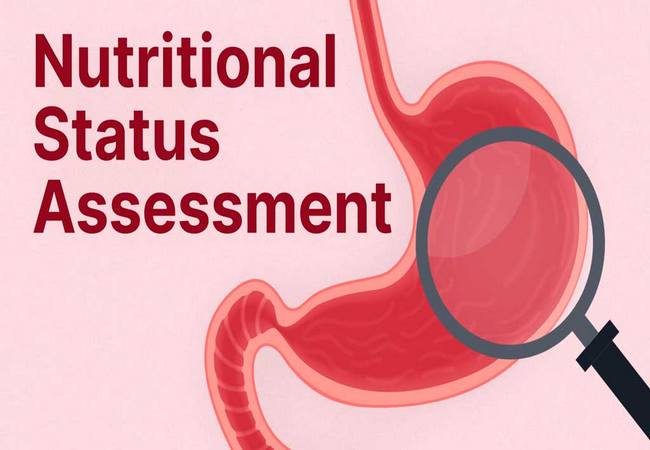Nutritional Status Assessment: Methods and Importance
Definition of Nutritional Assessment:
Nutrition is one of the most essential aspects in life for all. Diet, whether therapeutic or regular, has a major impact on a person’s health, maintenance and recovery from an illness. Nutritional behavior is a lifestyle that is influenced by culture; it must be considered as the nurse provides advice and guidance to individuals and families.
Objective of Nutritional Assessment:
It includes-
- To detect nutritional problems.
- To develop the plan to meet the nutritional needs.
Definition of Nutritional Status:
Nutritional status is the assessment of condition of health of an Individual as determined by the nutrients the body receives and utilizes.

Importance of Nutritional Status Assessment:
1. Essential in planning.
2. Provides data and information for evaluation: Evaluation of the effects of changing nutritional, health of economic influence including intervention.
3. Helps to define priorities and responsibilities of public health system at different levels.
- Identification of individuals or population at risk.
- Selection of individual or population for an intervention.
Methods of Nutritional Status Assessment:
All the assessment methods of nutritional status includes-
- Clinical examination,
- Nutritional anthropometry,
- Biochemical evaluation,
- Functional assessment,
- Dietary survey,
- Vital and health statistics,
- Ecological studies.
All the above assessment methods of nutritional status have explained in the below:
1. Clinical Examination:
A WHO Export Committee classified signs used in nutritional surveys into 3 categories as those:
- Not related to nutrition: e.g. alopecia, pyorrhoea, pterygium.
- That needs further investigation: e.g. malar pigmentation, corneal.
- Known to be of value: e.g, angular stomatitis, bitot’s spots etc.
2. Nutritional Anthropometry:
a. Height & weight:
- Gomez’ classification (weight for age),
- Well come classification (weight for age),
- Waterlow’s classification (weight for Height).
b) Arm circumference,
c) Skin fold thickness.
3. Biochemical evaluation:
- Laboratory tests: Hb estimation, stool examination, Urine examination.
- Biochemical tests: Scrum iron. Scrum retinol. Urinary iodine. Scrum folate.
4. Functional Assessment:
Structural integrity. Host defense. Hemostasis, Reproduction, Nerve function. Work capacity.
5. Assessment of dietary intake / Dietary survey:
A diet survey may be carried out by one of the following methods:
- Weighment of raw foods,
- Weighment of cooked foods,
- Oral questionnaire method.
6. Vital & Health statistics:
- Infant mortality rate,
- Neonatal mortality rate,
- Still birth rate, etc.
7. Ecological studies:
- Food balance sheet e.g. per capita supply,
- Socio- economic factors e.g. family size,
- Health and educational services e.g. PHC service,
- Conditioning influences e.g. viral infection.

Maria Khatun Mona is a Founder and Editor of Nursing Exercise Blog. She is a Nursing and Midwifery Expert. Currently she is working as a Registered Nurse at Evercare Hospital, Dhaka, Bangladesh. She has great passion in writing different articles on Nursing and Midwifery. Mail her at “maria.mona023@gmail.com”
